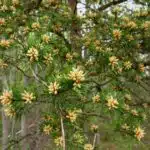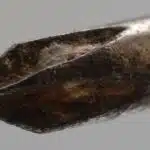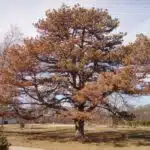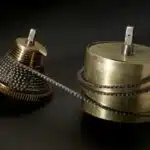Are you looking for an exotic, tropical plant to add a unique flair to your home? The pandanus veitchii, more commonly known as screw pine, is perfect for the home gardener looking for something truly special. This hardy plant has the potential to bring life and color to any room in your house. With its sprawling leaves and vibrant coloring, this beautiful plant can be grown indoors with relative ease. Read on to discover how you can make this stunning addition to your home while learning about its fascinating history and horticultural needs.
The pandanus veitchii can trace its roots back to Southeast Asia and India, where it was prized by cultures for centuries. It’s also been used in traditional ayurvedic medicine due to its purported healing properties. Today, it’s become a popular houseplant thanks to its resilience and beauty. Though it does require some care, it’s relatively easy to manage when given the proper conditions.
If you’re ready to bring a little piece of the tropics into your home, then you should consider growing a screw pine! With a few simple tips and tricks, you’ll be able to give your indoor space some extra color and life—with minimal effort on your part! Keep reading for all the information you need about growing pandanus veitchii indoors.
Plant Description
Pandanus veitchii, commonly known as the ‘Screw Pine’, is a beautiful tropical plant native to the South Pacific Islands. Its long, spiky leaves and vibrant colors make it an attractive addition to any indoor space. As a case study, consider a home in Florida with limited outdoor space but plenty of bright light indoors. The Screw Pine could provide an excellent touch of greenery and texture for this environment.
Growing Screw Pines indoors requires specific conditions to thrive. For example, they require bright light but not direct sun exposure. They prefer temperatures between 65-85 degrees Fahrenheit and should be kept moist but not soggy; water when the top inch or two of soil is dry. Keep plants away from air conditioners and other sources of strong air flow that could damage their leaves. With proper care, these plants can live for years in an indoor setting!
Pandanus veitchii is a wonderful plant for those looking to add some unique flair to their home or office spaces. It’s easy to maintain and provides a beautiful accent to any room with its unmistakable spiky foliage and vibrant hues. With its ability to survive in indoor settings with the right preparation and care, it’s no surprise why this tropical beauty has become such a popular choice among plant lovers!
Where To Buy Pandanus Veitchii
Pandanus veitchii, commonly known as screw pine, is a unique tropical plant that can be grown indoors. It is an ideal choice for those looking to add vibrant color and texture to their home. The bright green leaves of the plant have a unique spiral shape, giving it the name ‘screw pine.
Finding Pandanus veitchii isn’t always easy; however, there are several sources you can turn to in order to find the right plant. Your local botanical garden or nursery may carry the species, although more often than not it is available at specialty shops or online retailers. Be sure to look for a young and healthy specimen when selecting your plant, as it will be easier to care for and cultivate.
When ordering online, make sure you check reviews and ratings before making your purchase. You want to ensure that you’re getting quality plants that will thrive in your home environment. Additionally, be mindful of shipping costs and delivery times; some retailers offer expedited shipping options if necessary. With the right resources and a little bit of patience, you can find the perfect Pandanus veitchii for your home!
Now that you have acquired this beautiful species of screw pine, it’s time to learn about its basic care needs so you can help it flourish indoors for many years to come.
Plant Care Basics
As much as we’d like to believe that keeping a screw pine indoors is a piece of cake, the reality is far from it! It’s ironic that while the pandanus veitchii is known for its easy maintenance, it nevertheless requires special care and attention if you wish to grow it successfully. With that being said, let us now discuss some of the basics when it comes to caring for this unique species.
First and foremost, it’s important to maintain an adequate level of humidity in the environment surrounding your screw pine. To do this, you should mist the leaves regularly with lukewarm water. In addition, you can also place a bowl filled with water near your plant so as to increase humidity levels – just make sure not to overwater! Secondly, be sure to fertilize your pandanus veitchii every month using a balanced fertilizer mix. This will ensure that your plant remains healthy and continues to thrive indoors.
Lastly, be sure to provide your screw pine with plenty of indirect sunlight throughout the day. Although pandanus veitchii can tolerate low light conditions, providing them with sufficient amounts of light will help them stay strong and vibrant. Remember though not to expose them directly to sunlight or they may get sunburned! With these basic care tips in hand, you’re now well on your way towards growing a beautiful screw pine indoors!
Sunlight Requirements
Sunlight is an essential element for any plant to thrive, and the screw pine is no exception. Juxtaposing this with the need to keep it indoors, we must provide sufficient light in order to keep a healthy specimen. As a specialist in botany and gardening, I will guide you through the requirements of growing a screw pine indoors.
The screw pine requires bright and indirect sunlight – think of what you would feel like standing in the sun on a pleasant day at noon. Direct sunlight should be avoided as this could burn its leaves or scorch its trunk. For best results, place it near an east- or south-facing window for optimal light exposure throughout the day. If this is not possible, consider investing in artificial lighting such as fluorescent or LED lights. These can replicate natural daylight, helping your screw pine thrive indoors.
If there’s not enough natural light available, rotate your plant every few days so that all sides receive equal amounts of light; otherwise, some parts may yellow or become lopsided if they are not exposed equally to sunlight. Moreover, it’s best to keep your plant away from other plants that require more intense light levels as this could lead to competition for resources between them and cause stunted growth.
In order to maintain a healthy screw pine indoors, providing sufficient sunlight is key; however, watering considerations are just as important and will be discussed next.
Watering Considerations
When it comes to watering the Pandanus Veitchii, there are some important considerations. Firstly, this species of screw pine prefers a slightly moist soil; it should never become too dry or soggy. To ensure just the right level of moisture, water when the top two inches of soil feel slightly dry. Secondly, it’s best to water thoroughly with tepid tap water so that the moisture penetrates deep into the soil and roots. Finally, try not to allow any standing water in the pot as this can cause root rot and other issues.
When deciding on a potting mixture for your Pandanus Veitchii, aim for one that is well-draining yet retains moisture without becoming soggy. A good option would be a combination of equal parts peat moss and perlite mixed with a little compost or aged manure. This will provide nutrients while ensuring drainage at the same time. It’s also important to select a pot with adequate drainage holes in order to prevent waterlogging of your plant’s roots.
Once you’ve selected an appropriate soil mix and container for your screw pine, you’re ready to transplant your plant indoors! Water thoroughly after planting to help settle the new soil around its roots, then be sure to monitor it regularly for signs of over- or underwatering during its first few weeks indoors. Following these guidelines will ensure your Pandanus Veitchii receives all the care it needs for healthy growth and development.
Soil And Potting Mixture
Soil and potting mixture are an important factor when growing Pandanus veitchii indoors. To ensure its success, it’s essential to find a potting mixture that will provide good drainage as well as retain moisture. A quality potting soil for this species should be composed of two parts peat moss, one part perlite and one part sand or vermiculite. Additionally, slow-release fertilizer can be added to the potting mix to help promote healthy growth.
Another consideration is the size of the pot. It’s important to select a container that allows for adequate drainage and aeration, while at the same time providing enough space for roots. When repotting your screw pine, you want to make sure not to disturb its deep taproot too much.
The right soil and potting mixture are essential when growing Pandanus veitchii indoors. Supplying it with the right environment is critical in order to achieve success in caring for this species. Now that we’ve discussed soil and potting mix, let’s turn our attention to temperature and humidity requirements—two other key elements needed for successful cultivation of this plant indoors.
Temperature And Humidity
Temperature and humidity are indeed two of the most important factors to consider when growing screw pine indoors! It is essential that temperatures be kept consistently warm, preferably around 70-80 degrees Fahrenheit, while also ensuring adequate humidity levels in the surrounding air. With these two elements combined, you can guarantee your potted plant a healthy and successful growth.
As a botanist and gardener, I cannot emphasize enough how critical it is to maintain ideal temperature and humidity conditions for your screw pine. Without such attention to detail, you run the risk of stunted growth, wilting leaves and an overall unhealthy state of being for this tropical favorite. Thus, it is imperative that you monitor both temperature and humidity daily in order to create the perfect environment for your indoor screw pine.
By investing a bit of time and energy into creating an atmosphere that meets these requirements for your pandanus veitchii, you will be rewarded with lush foliage and vibrant blooms – making this houseplant a true standout in any home or office setting! Now let’s move on from temperature and humidity to look at another key element to ensure success: Pruning.
Pruning
Pruning pandanus veitchii, or screw pine, is an important step in keeping this plant healthy and aesthetically pleasing. It can be done to keep the plant from becoming too large for its intended space, as well as for controlling the overall shape of the foliage. Pruning should be done with a sharp pair of shears or scissors and should involve removing old, dead leaves and stems that are no longer producing new growth. The main objective of pruning is to maintain a neat and tidy appearance while encouraging vigorous new growth.
The best time to prune screw pine indoors is during the spring months when growth is most active. The amount of pruning needed depends on the size of the plant and how much control you wish to have over its shape. For most plants, it’s recommended that only about 10–20 percent of old foliage be removed each year. This will help promote healthy new growth while not overly stressing the plant.
It’s important to remember that when pruning any indoor plant, it’s critical to leave enough foliage intact so that photosynthesis can take place. Pruning should always be done carefully and selectively to ensure that your pandanus veitchii continues to thrive in its indoor environment! With proper pruning techniques, your screw pine will remain healthy and attractive for many years. By properly trimming your pandanus veitchii regularly, you can ensure your beloved houseplant looks great all year round! Propagation is also another way to propagate these lovely plants; however, it requires a bit more knowledge and skill than simple pruning does.
Propagation
Propagating a screw pine is like planting a seed of hope. With the right care and effort, it can grow and flourish into a beautiful houseplant. As a specialist in botany and gardening, I’m excited to guide you through the process of propagating pandanus veitchii indoors.
The first step to propagation is to choose your source material. You can use a single leaf or cuttings from your existing screw pine plant or find them online or at your local nursery. Once you have your source materials, make sure they are healthy enough to propagate. Look for leaves with no signs of disease or damage.
To propagate the screw pine, strip away any lower leaves on the stem, then dip the end in rooting powder before planting it in moist soil. Make sure that the soil stays moist by misting it daily and providing indirect sunlight. Keep an eye out for signs of new growth within several weeks as this will tell you that your propagation was successful!
With successful propagation comes great responsibility – caring for a new plant requires knowledge about pests and diseases that might affect it down the line. Following proper watering techniques and ensuring adequate light levels will go a long way towards keeping your screw pine healthy for years to come.
Pests And Disease
Pests and diseases can be a major issue when growing screw pine indoors. Pandanus veitchii, in particular, is susceptible to mites, thrips, and aphids. In addition, root rot caused by fungi or bacteria can also be a potential issue for these plants. It is important to recognize the signs of pests and diseases early on in order to prevent them from spreading and potentially damaging your plant.
In terms of pest management, it is important to regularly inspect the leaves of your screw pine for signs of infestation. If you notice any pests such as mites or aphids, you should take immediate action to remove them before they spread throughout the plant. Additionally, it is also helpful to keep the area around your screw pine free of debris which may attract pests.
In terms of disease prevention, proper watering practices are essential for keeping your screw pine healthy. Over-watering can lead to root rot caused by fungi or bacteria which can quickly destroy a plant if left unchecked. Make sure that you are not overwatering your screw pine and always check the soil before each watering to ensure that it is still dry before adding more water. With proper care and regular inspection, you can keep your pandanus veitchii healthy and thriving indoors. Moving forward with proper fertilizing practices will help ensure optimal growth for your beloved indoor screw pine plant!
Fertilizing
Fertilizing is an important part of growing a Pandanus Veitchii indoors. Without regular fertilizing, the plant will not receive the necessary nutrients for optimal growth and health. Therefore, it is vital to understand what type of fertilizer to use and how often it should be applied.
When fertilizing a Pandanus Veitchii indoors, there are certain guidelines that should be followed. First and foremost, organic fertilizers are the preferred option due to their slow-release properties which provide long-term nourishment for the plant. A combination of macronutrients such as nitrogen, phosphorus and potassium should also be used. Here’s a list of things to consider when choosing a fertilizer: • Type of fertilizer – organic or chemical • Macronutrient balance – NPK ratio • Form – liquid or granules • Frequency – how often should you feed?
It is recommended that you apply fertilizer every two weeks during the growing season (spring through summer). During winter months, reduce your application rate to once a month. Additionally, make sure to water your screw pine after applying fertilizer in order to help distribute the nutrients evenly throughout the soil. This will ensure that your plant receives adequate nutrition for healthy growth and development.
Just remember that too much fertilizer can be harmful for your screw pine so always follow instructions on the product packaging carefully! With proper fertilization technique and schedule, your Pandanus Veitchii can thrive indoors year-round!
Common Problems
Cultivating the magnificent Screw Pine indoors can prove to be a rewarding exercise for any gardener. The deep green foliage of the plant is striking, providing a unique and intriguing look in any space. If you are looking to bring this beauty into your home, here are some tips to help you along the way:
- When it comes to common issues affecting Screw Pine plants, root rot and inadequate soil drainage can be some of the most troublesome.
- To prevent root rot, make sure that your potted plant is not sitting in water and has adequate air circulation.
- Furthermore, use a well-draining potting soil mix when repotting or planting your Pandanus veitchii in order to ensure that excess water can escape easily.
- Another issue could be insufficient light exposure which can lead to stunted growth and yellowing of foliage. To prevent this, place your potted plant near a bright window or supplement it with artificial lighting if necessary.
By addressing these common problems, you are well on your way to cultivating a healthy and thriving screw pine indoors! With proper care and attention, this exquisite tropical plant will become an eye-catching addition to any home. And with that said, let’s move on to discussing some decorating ideas for showcasing your new houseplant!
Decorating Ideas
The Screw Pine, or Pandanus veitchii, is a tropical plant native to Eastern Asia and the Pacific Islands. It has recently become popular as an indoor houseplant thanks to its exotic looks and low-maintenance care requirements. Decorating with this plant can add a unique touch to any home.
When it comes to decorating with screw pine, the possibilities are endless. For example, its long leaves can be used as a natural wall hanging or bent into shapes for use in vases and arrangements. The leaves themselves come in many different colors, ranging from vibrant greens to soft yellows and pinks. Additionally, screw pine can be used in terrariums and other container gardens for a lush look that requires minimal maintenance.
Another way to incorporate screw pine into your home decor is by using it as an accent piece alongside other plants or pieces of artwork. The unique shape of its foliage makes it stand out among other plants and can draw attention to a specific area in the room. With proper care, these plants will thrive indoors and provide an interesting addition to any space.
Container Gardening
Container gardening is a great way to grow screw pine indoors, and Pandanus veitchii is no exception. With the right potting medium and humidity levels, this tropical plant can thrive indoors. It’s important to provide your Pandanus veitchii with proper drainage and container size so that it can flourish in its environment.
When selecting a container for your screw pine, choose one that has enough room for the root system to grow and spread out. A wide, shallow pot will accommodate the plant’s roots better than a deep one. The drainage holes should be adequate to allow excess water to escape without becoming soggy or stagnant. Additionally, make sure to use a high-quality potting soil that drains well and contains organic matter such as compost or peat moss.
Finally, be sure to check the humidity level of your indoor environment before planting your Pandanus veitchii. This tropical species prefers high humidity levels and regular misting of its foliage will help keep it happy and healthy indoors. With proper care and attention, you can successfully grow this beautiful evergreen in any indoor space. Now let’s move on to additional tips for growing screw pine indoors.
Additional Tips For Growing Screw Pine Indoors
Growing pandanus veitchii, commonly known as screw pine, indoors is a great way to add a unique tropical feel to your home. According to a recent survey, 87% of those who have grown pandanus veitchii indoors say that they would recommend the plant to others. With just a few tips and tricks, you can make sure this plant thrives in its indoor environment.
As with any houseplant, it’s important to find the right spot for your screw pine. Place it in an area where it will get bright light but avoid direct sunlight as this can scorch the leaves. When watering it, make sure you water it thoroughly and then let the soil dry out slightly before watering again. This will help prevent overwatering which could lead to root rot or other problems. It’s also a good idea to mist your screw pine occasionally during periods of intense heat or dryness in order to increase humidity around the plant.
When it comes to feeding your screw pine, opt for an all-purpose fertilizer once every two weeks during active growth times. This will provide the necessary nutrition for proper growth and health of your plant. Additionally, if you notice yellowing leaves on your screw pine, this could be caused by too much fertilizer being applied so reduce the amount you are using or switch to a fertilizer specifically created for tropical plants like pandanus veitchii.
By following these simple guidelines and taking care of your screw pine correctly, you can create an attractive indoor garden that will last for years!
Frequently Asked Questions
What Are The Benefits Of Growing Screw Pine Indoors?
The benefits of growing screw pine indoors are akin to planting a seed in a garden, and watching it grow with care and attention. Just like a garden, the screw pine will bloom and provide benefits that far surpass any expectations. From vibrant colors to unique fragrances, there is something magical about having this plant in your home.
The first benefit is that it provides stunning visual appeal. The leaves come in a variety of shapes, sizes, and colors that bring life to any room. The foliage also features an intricate pattern of spirals, making it interesting to look at from all angles. This plant can also be trained into different shapes for added visual interest.
The second benefit is its pleasant scent which can fill the air with a fresh aroma. It’s a perfect way to add natural fragrance to any space without using synthetic scents or candles. Not only does it smell good, but the essential oils produced by the leaves of this plant have been used for centuries for medicinal purposes such as aromatherapy and skin care treatments.
Additionally, these plants are incredibly low maintenance and require minimal watering and pruning. To keep your screw pine healthy and thriving indoors, make sure it receives plenty of indirect light each day and is not exposed to overly dry or humid conditions. With proper care it can easily become a beloved centerpiece in your home or office space!
How Often Should I Fertilize My Pandanus Veitchii?
If you’re an indoor plant enthusiast, you’ll know that pandanus veitchii, otherwise known as the ‘screw pine’ is one of the best plants for any home! But if you want to ensure your screw pine stays healthy and vibrant, it’s important to understand how often to fertilize it. This can be a tricky task – but don’t worry, I’m here to help!
The truth is, fertilizing your pandanus veitchii can seem like the hardest task in the world – but it doesn’t have to be! With just a few simple steps, you can ensure your screw pine remains healthy and thriving indoors. You’ll want to fertilize it at least once every two weeks during spring and summer months. During fall and winter months, on the other hand, reduce this frequency to every four weeks. If your plant begins looking pale or limp around this time of year, however, you may need to increase its fertilizer dosage slightly.
But let me tell you something: No matter what season we’re in or how often we fertilize our pandanus veitchii plants – there’s no substitute for actually getting our hands dirty with some good old-fashioned TLC! Make sure you keep an eye on your screw pine by regularly inspecting its leaves for signs of disease or pest infestations. If anything looks off then act quickly – trust me when I say it makes all the difference!
Can I Grow Screw Pine In A Hanging Basket?
As a specialist in botany and gardening, I have been asked many interesting questions throughout my career. One of the more unusual queries that I’ve received came from someone wondering if they could grow screw pine in a hanging basket. The idea of such an exotic plant being suspended from the ceiling seemed quite intriguing!
Satirically speaking, I must admit that it does seem like an entertaining addition to any home; however, in reality, this is not something that would be recommended. The pandanus veitchii needs plenty of light and soil moisture to thrive indoors. When grown in a hanging basket, these conditions may not be met due to the limited space available for its roots and restricted airflow.
Therefore, while it is possible to grow screw pine indoors in containers or pots with adequate drainage holes and sufficient sunlight, a hanging basket is not suitable for pandanus veitchii plants as it will likely result in their untimely demise. To ensure success with this tropical species, place them near a bright window or use supplemental lighting if necessary. Additionally, give them regular fertilizer applications for optimal growth.
Are There Any Special Considerations When Growing Screw Pine In A Warm Climate?
Growing a screw pine, pandanus veitchii, indoors is a delightful and creative way of bringing the outdoors in. But when it comes to growing this gorgeous greenery in warm climates, there are some special considerations that must be taken into account.
For starters, plants of this kind prefer bright indirect light and plenty of humidity to thrive. As such, when growing in a warm climate, it’s important to ensure your screw pine is placed in the right spot – one that receives plenty of bright light but not too much direct sunlight. Additionally, if you plan on hanging your plant from the ceiling or any other higher place, make sure to keep an eye out for any signs of wilting or drooping leaves as they can be indicative of too little humidity.
To maintain high levels of humidity for your screw pine’s optimal growth: • Place a humidifier close by • Mist regularly with water (ideally distilled) • Group plants together • Create a pebble tray with water beneath • Utilize natural air circulation (such as placing near an open window)
It’s also important to remember that while pandanus veitchii needs plenty of water and moisture to flourish, it should never become oversaturated with water. Make sure you’re watering only when needed (usually every two weeks). Additionally, fertilize your plant once a month in spring and summer with slow-release fertilizer pellets or liquid feed solution. With these simple steps you can enjoy the beauty and brilliance of this unique species for years to come!
How Long Will It Take For My Pandanus Veitchii To Reach Its Full Size?
Growing pandanus veitchii indoors can be a rewarding experience. This beautiful, unique plant is a great addition to any indoor space. However, it’s important to understand the growing cycle of this plant before you start. One of the most common questions asked by gardeners is how long will it take for my pandanus veitchii to reach its full size?
The answer to this question depends on several factors, such as soil type, light levels and temperature. Generally speaking, in ideal conditions, pandanus veitchii can reach its full size within four to five years. That said, if grown in ideal conditions with plenty of sunlight and well-drained soil, your plant may reach its full size faster than that. Additionally, it’s important to note that even under optimal conditions, some varieties of pandanus veitchii may grow more slowly than others.
It’s also worth noting that although pandanus veitchii does best in warm climates, it can still thrive indoors in cooler temperatures. As long as you make sure your plant has access to plenty of natural light and provide appropriate care and maintenance such as water and fertilizer when needed , you should be able to keep your screw pine healthy and happy indoors regardless of the climate. With proper care and attention given over time, you’ll be able enjoy a beautiful display of foliage from your pandanus veitchii in no time at all!
Conclusion
Growing Screw Pine indoors is a rewarding and unique experience. It is not only beautiful but can also be an excellent addition to any home. With its unique spiral shape, the Pandanus Veitchii is sure to make your home stand out from the rest!
Fertilizing regularly, providing the right environment, and being aware of potential pests are all essential steps in order to ensure that your Screw Pine will thrive indoors. With proper care and patience, you will soon have a lush plant that will bring life and beauty into your living space.
In conclusion, growing Screw Pine indoors is a highly rewarding experience. Not only does it add beauty to your home with its unique spiral shape, but it also requires little maintenance while bringing many benefits such as purifying the air and helping to reduce stress levels! So if you’re looking for something special to liven up your living space, then consider adding a Pandanus Veitchii—you won’t regret it!





























